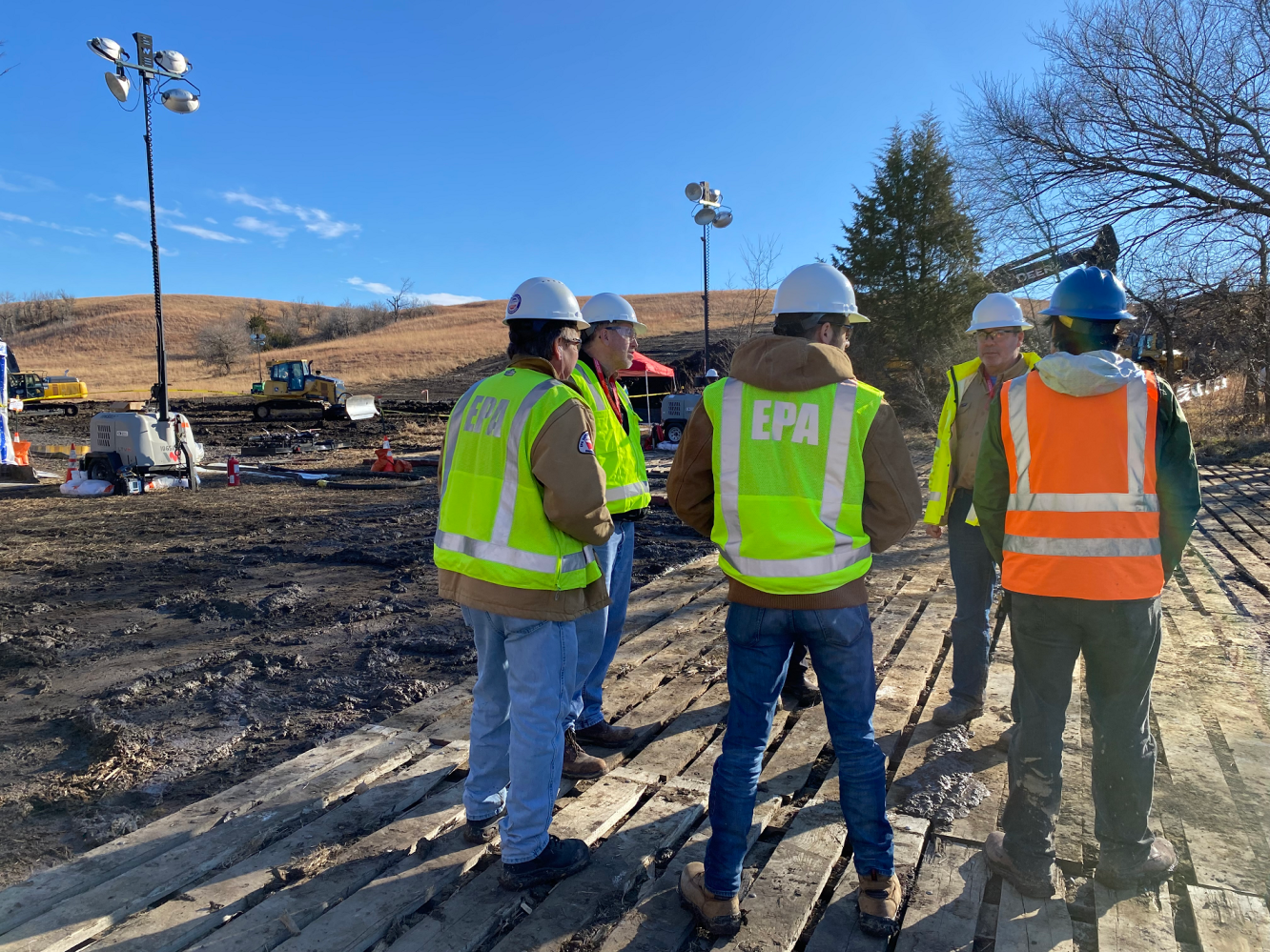
The Federal Aviation Administration (FAA) has issued a second notice to pilots and drone operators in Kansas, prohibiting them from flying over the site where TC Energy’s Keystone pipeline spilled nearly 600,000 gallons of sludgy oil into a creek earlier this month.
The first Notice to Air Missions (NOTAM) prohibiting aircraft operations in the area was issued on December 16 with an ending time for Wednesday night. But now, a new NOTAM has declared that only relief aircraft operations under the direction of TC Energy will be authorized in the airspace until December 27.
It’s not unusual for the FAA to prohibit drones from flying over any emergency or rescue operations. But as local nonprofit news outlet Kansas Reflector points out, drone footage is among the only means for citizens to assess the damage because the site is closed to the media. “Even lawmakers are not allowed there for a briefing,” the news operation reports.
When Canada-based TC Energy was asked about the requirement for a no-fly zone, it said:
Clearing the airspace is critical for the safety and security of the pilots conducting ongoing monitoring as well as the working crew on the ground. Crews are working around the clock on the incident and need to be distraction-free.
It’s an explanation that Rep. Lindsay Vaughn, D-Overland Park, is not entirely convinced with. Stressing that “there are still a lot of unanswered questions,” she told the Kansas Reflector:
Third-party drones — if they’re not going to be allowed to monitor the site, then I think there has to be other ways that media or third parties can have greater information or access to what’s going on because that’s one of the best ways to hold all parties accountable for the best outcome possible.
The December 7 spill of 14,000 barrels into Mill Creek is said to be the largest ever since the Keystone pipeline began operations about a decade ago. Drone footage taken shortly after the spill shows there’s a lot to clean up.
Read: Holiday deals on DJI drones that you can still grab with next-day delivery
The US Environmental Protection Agency (EPA) explains that the material that discharged from the ruptured pipeline was diluted bitumen, a heavy crude oil. Diluted bitumen is extremely hard to clean up because it sinks in water rather than floating on the surface.
According to Kansas lobbyist and environmental champion Zack Pistora, it’s “going to be months, maybe even years before we get the full handle on this disaster and know the extent of the damage and get it all cleaned up.”
TC Energy says it has recovered approximately 7,233 barrels of oil from the creek so far. “Our recovery rates have the potential to slow by the upcoming cold weather in the area,” the company says.
Read: It could’ve been a racing drone; it’s now destroying enemy targets
FTC: We use income earning auto affiliate links. More.





Comments